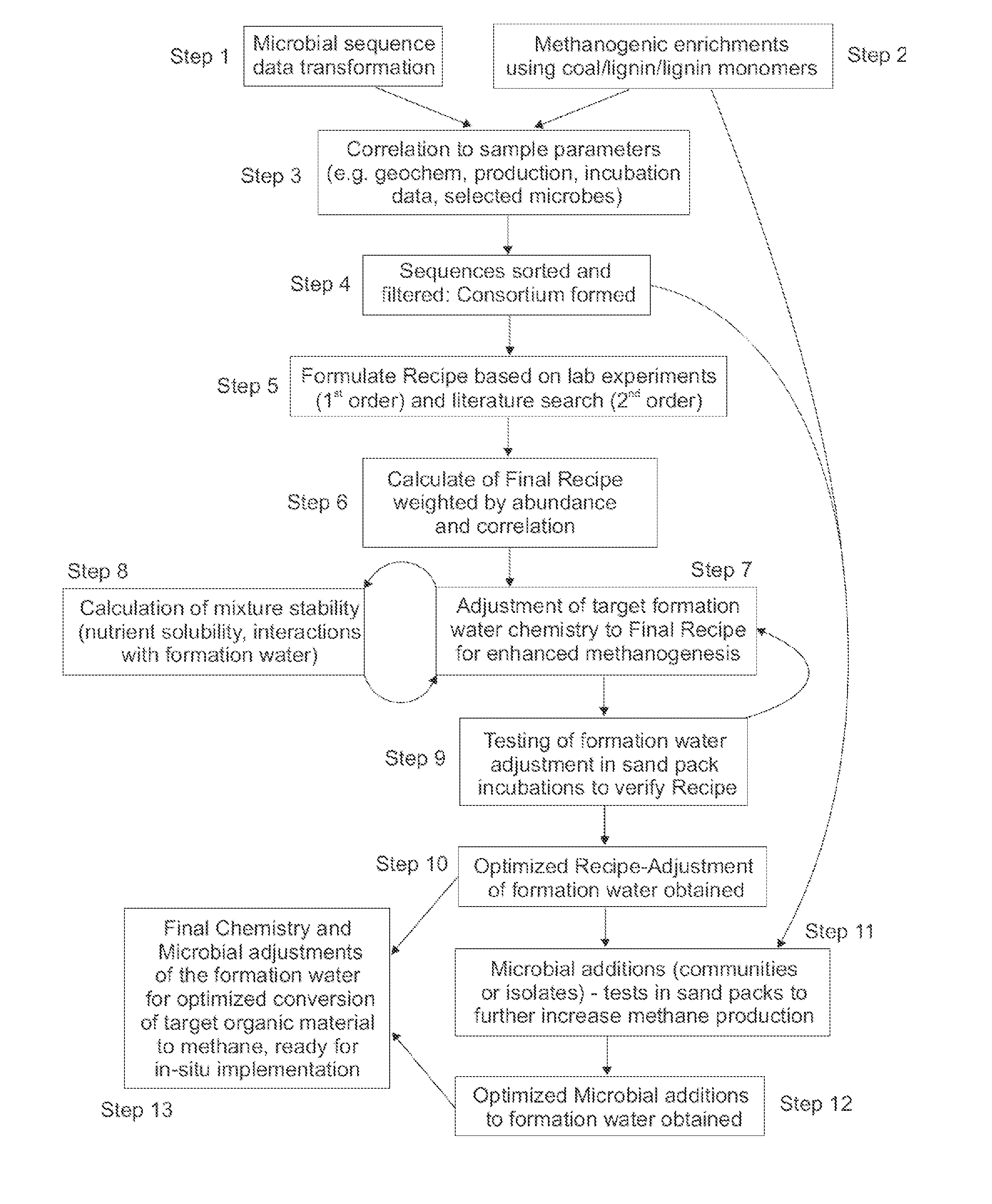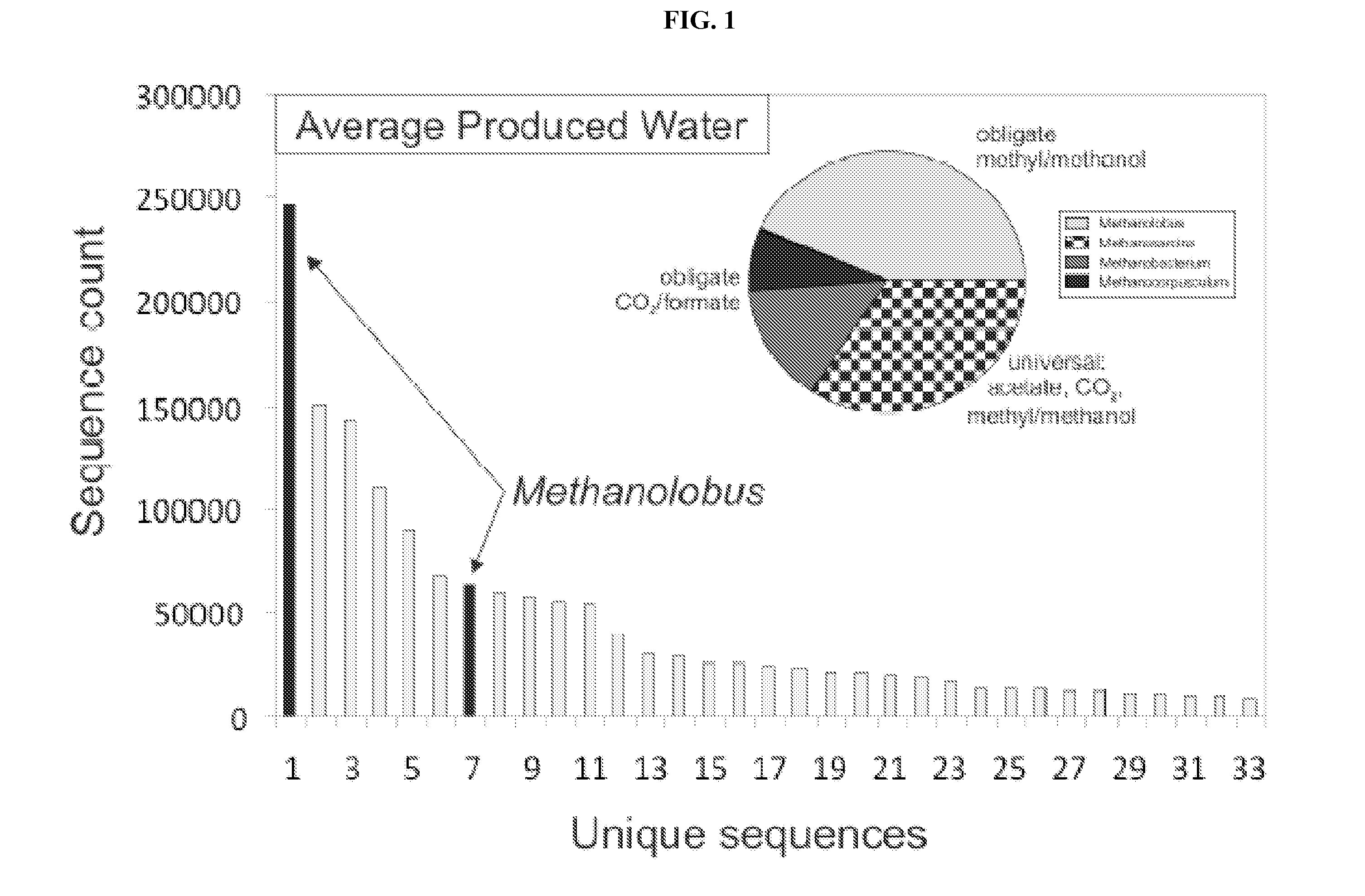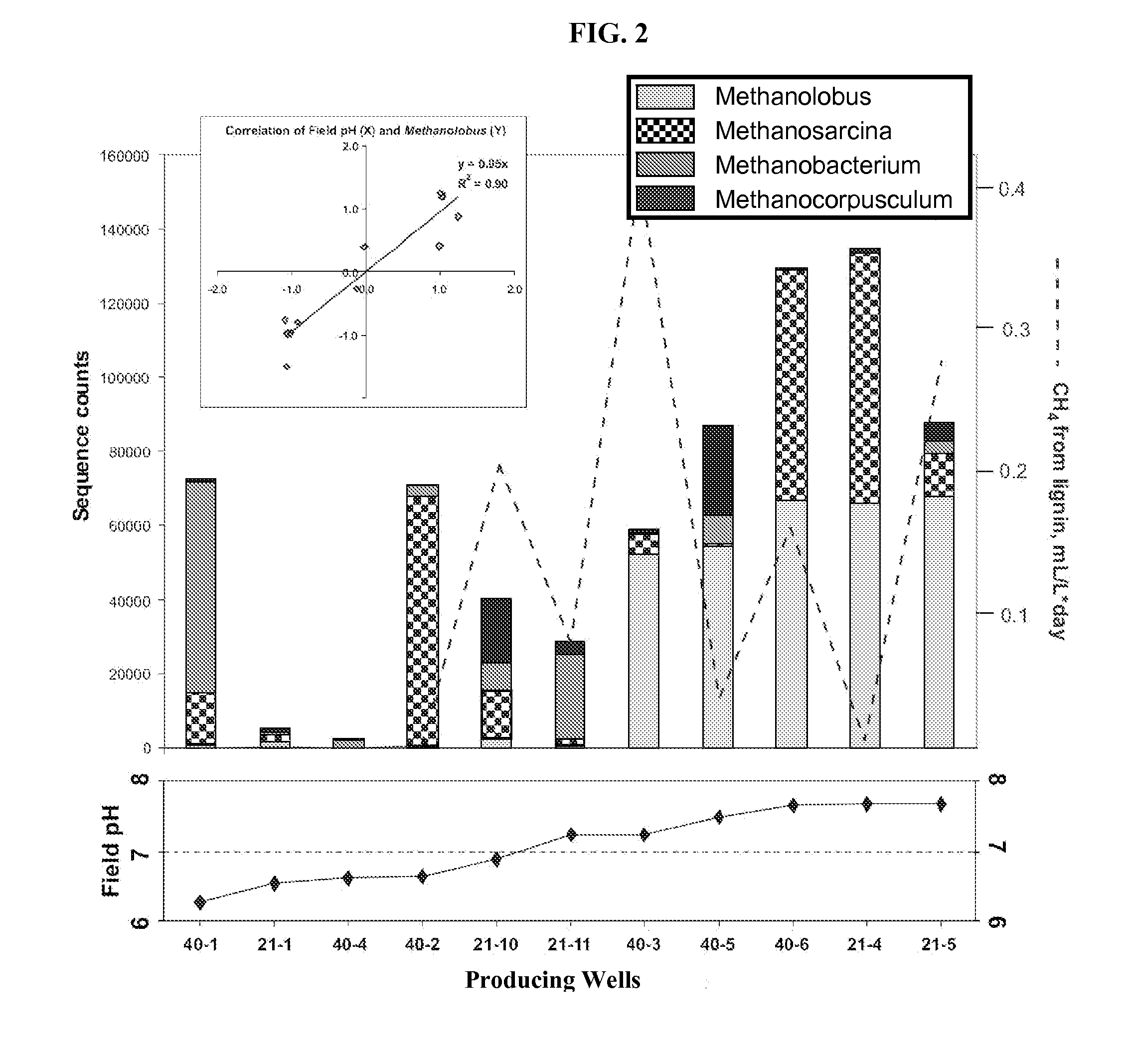In situ methanogenesis modeling and risk analysis
a methanogenesis and risk analysis technology, applied in the field of natural gas and methylotrophic energy generation, biogenerated fuels and microorganisms, can solve the problems of not maximizing the methanogenesis, achieve the effect of enhancing microbial methanogenesis, improving methylotrophic biogas formation, and maximizing benefi
- Summary
- Abstract
- Description
- Claims
- Application Information
AI Technical Summary
Benefits of technology
Problems solved by technology
Method used
Image
Examples
example 1
Identification of Methanolobus spp. for Methanogenic Degradation of Coal and Other Recalcitrant Organic Matter
[0186]This Example describes the identification of Methanolobus spp. as major contributor to methanogenic degradation of coal and other recalcitrant organic matter in subsurface gas reservoirs.
[0187]Production water was collected from the separator unit at the well head from a number of gas wells from the Beluga River Unit on the Cook Inlet of Alaska. A portion of the water sample designated for microbiological analysis was maintained anaerobically in sterile containers supplemented with cysteine and resazurin (redox indicator) under an argon headspace. The samples were shipped cold to Taxon's facility in California by express delivery.
[0188]Genomic DNA was isolated from cell pellets obtained by centrifuging the production water at 4,000×g for 30 min at 4° C. The pellets were resuspended in phosphate buffer and transferred to bead beating tubes. Total genomic DNA was extract...
example 2
Stimulation of Methanogenic Degradation of Coal and Recalcitrant Organic Matter in Model Sandpack Bioreactors by Adding Customized Nutrient Amendments of the Invention
[0190]In order to create a culture condition that approximated the rock matrix found in the sub-surface gas reservoir, carbonaceous material recovered from core samples were mixed in the natural in situ ratios with sand in anaerobic tubes fitted with solid rubber stoppers that were crimp sealed.
[0191]Specifically, ASTM grade sand (17.8 g, U.S. Silica Company) was added into 15 ml polypropylene conical tubes which was followed by addition of carbonaceous materials (0.167 g each of coal, sandstone with organic debris, and volcanic ash, to represent Cook Inlet gas-bearing formation) that are derived from Miocene aged rocks (i.e. core samples) from the Beluga gas field in Alaska, U.S.A. Conical tubes representing control set-up was amended with 22.88 g of sand but without adding the carbonaceous materials. The mixture in t...
example 3
Stimulation of Methanogenic Degradation of Coal and Recalcitrant Organic Matter in Model Sandpack Bioreactors by Adding Methanolobus
[0203]Methanolobus taylorii was added to sand pack tubes amended with target (Cook Inlet) coal / organic debris / volcanic ash, and optimized nutrient additions suspended in filter-sterilized, target production water. Rates of methane production were stimulated with addition of M. taylorii (FIG. 11).
[0204]Model sand pack bioreactors were set up as described in Example 2. Briefly, carbonaceous materials (0.167 g each of coal, organic debris, and volcanic ash) from Cook Inlet core samples were mixed in the natural in situ ratios with 17.8 g of sand (U.S. Silica Company, ASTM grade) in Hungate tubes (18×150 mm) fitted with blue, butyl rubber stoppers. The components had been transferred into an anaerobic chamber, which is where assembly of the tubes and inoculations with microorganisms took place. The tubes containing carbonaceous material / sand were overlayed...
PUM
 Login to View More
Login to View More Abstract
Description
Claims
Application Information
 Login to View More
Login to View More - R&D
- Intellectual Property
- Life Sciences
- Materials
- Tech Scout
- Unparalleled Data Quality
- Higher Quality Content
- 60% Fewer Hallucinations
Browse by: Latest US Patents, China's latest patents, Technical Efficacy Thesaurus, Application Domain, Technology Topic, Popular Technical Reports.
© 2025 PatSnap. All rights reserved.Legal|Privacy policy|Modern Slavery Act Transparency Statement|Sitemap|About US| Contact US: help@patsnap.com



